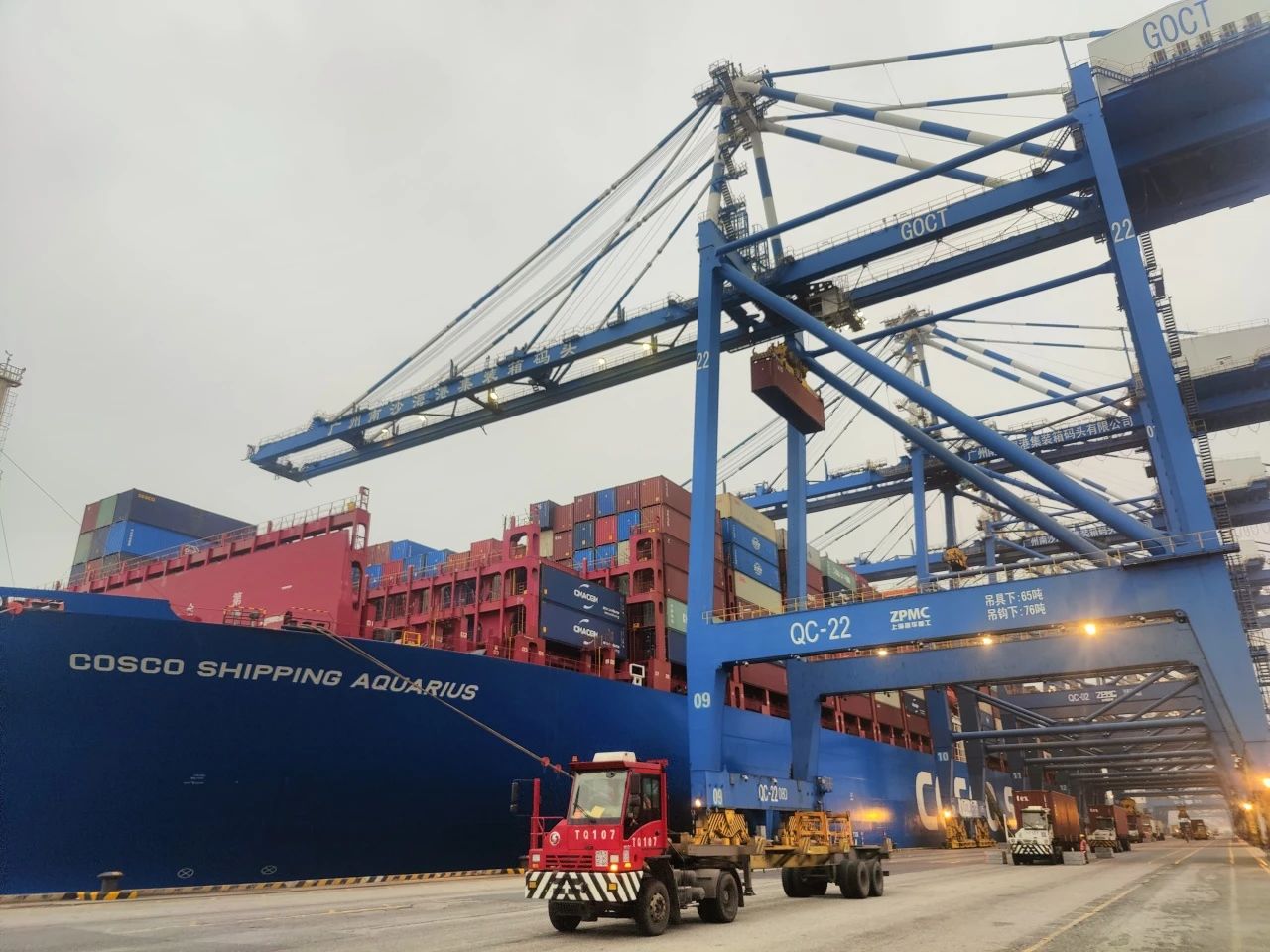The "Nodes to Network (N2N)" between Guangzhou Port and PSA Has Officially Launched (Picture)

“N2N” stands for “nodes to network”. Through deepening international port and shipping strategic cooperation and sharing information and data resources, it aims to achieve efficient and orderly ship operations in various ports, improve the overall efficiency of ship from departure ports to destination ports, reduce transportation costs and comprehensive energy consumption, and build a mutually beneficial and co-win new ecology of port and shipping cooperation.
The COSCO Shipping "Aquarius" vessel calling at the terminal is 400 meters long, 58.6 meters wide, and 30.7 meters deep, with a maximum load capacity of 197,000 tons, and its ports of call include Qingdao, Shanghai, Ningbo, Nansha, Singapore, Jebel Ali, Abu Dhabi, Dammam and other important ports along the “Belt and Road”.
At present, the 1.0 version of “nodes to network (N2N)” has established a collaborative mechanism among Nansha Port, Port of Singapore, and Dammam Port to achieve real-time information interconnection and intercommunication and build a cooperative mechanism covering key links such as data exchange and system connection, thus realizing the entry of ship dynamics and port operation information into the era of “digital quick connection”. This week, the COSCO Shipping “Aquarius” and “Libra” vessels successively docked at the Nansha Phase II terminal. Through information sharing and cooperation, it effectively avoided operational congestion caused by ships arriving at the port at the same time, and significantly improved the efficiency of double berthing operations, laying the foundation for the next step of coordination in the docking efficiency of ultra large ships and the integration of global port resource allocation.
In the future, Guangzhou Port and PSA will rely on the “nodes to network (N2N)” project to continuously deepen international port and shipping cooperation, gather port and shipping resources, and jointly build a new green, low-carbon, stable and reliable shipping ecosystem. (Deng Yanzhang, and Lin Yaorong)
News
- The "Nodes to Network (N2N)" between Guangzhou Port and PSA Has Officially Launched (Picture)
- “Goods Made in Luzhou” Set Sail to Saudi Arabia through the “Luzhou Port - Nansha Port” Sea-Rail Intermodal Transportation (Picture)
- The Dedicated Warehouse of Shunde Cross-border Freight Forwarders Association Have Been Put Into Use at Guangzhou Port Nansha International Logisti...
- Huang Bo and His Entourage Visited COSCO Shipping Group (Picture)
- Liuzhou Inland Port of Guangzhou Port Was Unveiled (Picture)